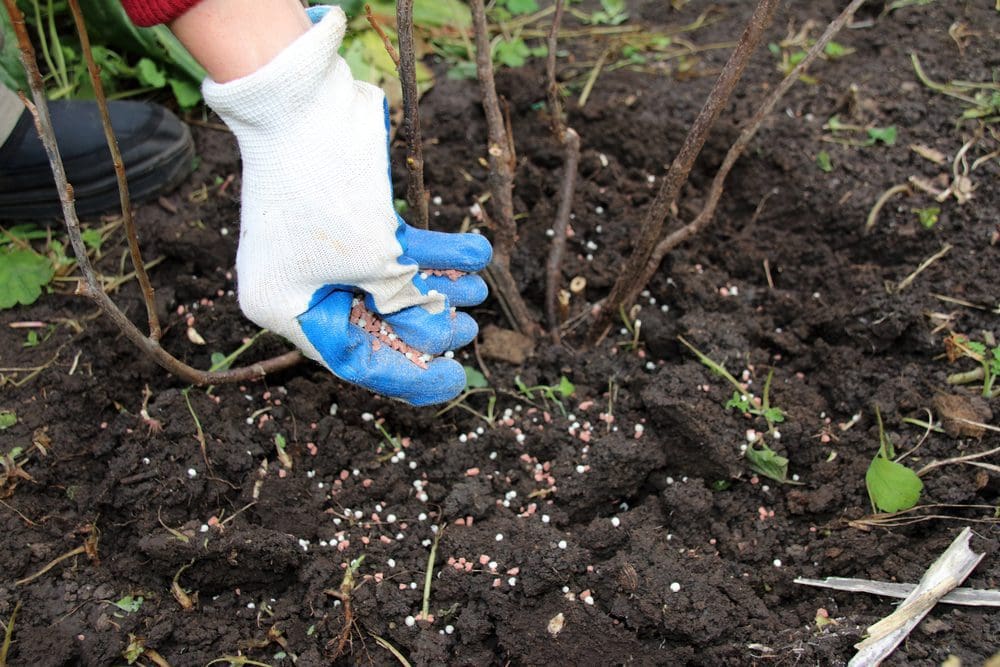What do all those numbers mean? Fertilizer explained.
Like us, plants require a nutritious diet to grow properly. What we put in the ground for our plants is comparable to what we put in our own bellies. When a nutrient is lacking, we will often see our plants calling for help via discolouration, stunted or spindly growth and even deformities. A specimen lacking the necessary elements for life can become stressed, making it more susceptible to attack from disease or insect. Learning the signs of nutrient deficiency in plants and how to amend the soil will keep your yard and house plants healthy and looking great.
The nutritional necessities for plants consist of three main suppliers of energy along with ten other elements that deliver additional nutrients in micro quantities. Combined at the proper ratio these essentials will supply your plant everything it needs.
Aside from hydrogen, carbon and oxygen the three most common nutrients provided to plants are nitrogen, phosphorus and potassium (NPK). A simple way to remember what each of these elements contributes to the health of your plant is to remember the phrase ‘up, down and all around’.
Nitrogen(N) is known to contribute the necessary nutrients for the foliage of the tree, up. Phosphorus(P) mainly targets root growth, down. Lastly, potassium(K) helps the entire tree function as a whole, all around.
The final three macronutrients include magnesium(Mg), sulphur(S) and calcium(C).
Supplying these nutrients in proper ratios for your target species is a great start to providing what it takes to grow a healthy plant successfully.
Micronutrient essentials for plants include boron, iron, manganese, copper, zinc, molybdenum and chlorine. Although these nutrients are only required in small quantities, without any one of them the entire plant could fail.
A well-balanced fertilizer should list all thirteen of the above mineral nutrients. Each of these elements allows the plant to perform all necessary functions effectively.
Production of chlorophyll, movement of macronutrients or even cell and seed production are all made possible with a proper ‘diet’. An adequate supply of nutrients will lead to a beautiful, functional plant. The transfer of nutrients is critical to the success of the plant and made possible with use of a well-rounded blend.
It may seem like a lot of different elements to include in your plant care regime. However most of the work has already been completed for you by plant research scientists. Common all-purpose bends have been balanced ahead of time and made readily available to you for easy use.
Here at Countryside Garden Center and Landscapes we carry our own spring and fall fertilizers made in house and a variety of organic products that will ensure the task of plant feeding is simple and easy for you. Micronutrients can easily be supplied with the use of compost, manure and nutritious planting medias.
Application of fertilizer and timing varies with the needs of the specimen. A freshly planted tree, shrub or perennial will establish most rapidly with a high phosphorus fertilizer to aid in the establishment of a healthy root system. If the planting is completed early in the year nitrogen can also be applied to encourage new upper growth as well.
However, if the planting is completed in the fall nitrogen must be eliminated entirely from the application blend as any new upper growth will not be mature enough to survive the oncoming winter months.
Fertilizer application can be altered after a year or two of the initial planting to have a more moderate supply of phosphorus and matching nitrogen and potassium levels.
Indoor plants on the other hand require a fairly consistent supply of mineral nutrients as they do not receive anything from their environment other than what is supplied to them artificially by humans.
To speak approximately, every two weeks another application of most fertilizers is enough to supply your house plant with everything it needs. Annuals are considered the ‘hungriest’ of the plant categories as they only have one year to grow to full maturity. For impressive showiness, be generous and frequent with your fertilizer application for all species.


